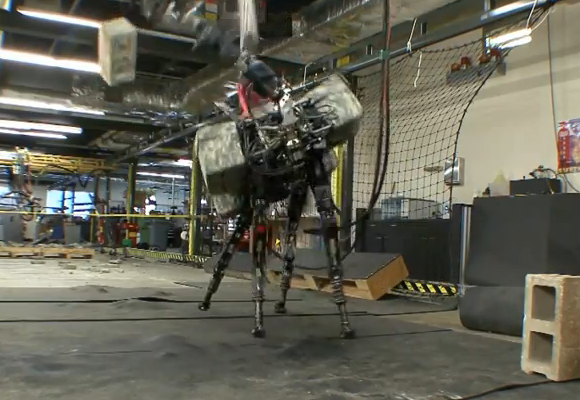
The screen capture above shows a group of swarm robots working together to move the blue box from the left side of the frame over to the right. It’s just one of many demonstrations shown in the video clip after the break. The clip is a quick sampling of the many swarm robotics research projects going on at the University of Sheffield’s Natural Robotics Lab.
The main focus for all of the research is to see what can be accomplished by getting a large group of relatively simple machines to work together. Each device has a microcontroller brain, camera, accelerometer, proximity sensors, and a microphone. By mixing and matching the use of available components they can test different concepts which will be useful in creating utility robot swarms for real-world tasks. The video shows off the robots grouping themselves by like characteristic, a test called segregation (the purpose of this didn’t resonate with us), and group tasks like moving that box. The nice thing is that a series of white papers is available at the post linked above (click on the PDF icon) so that you may dig deeper if these projects are of interest to you.
Continue reading “Treasure Trove Of Swarm Robotics Research”

















